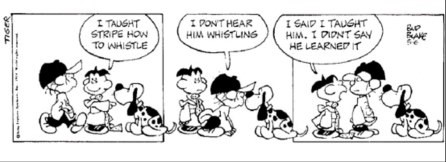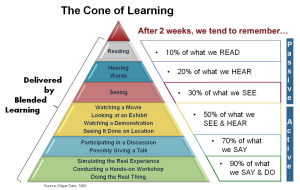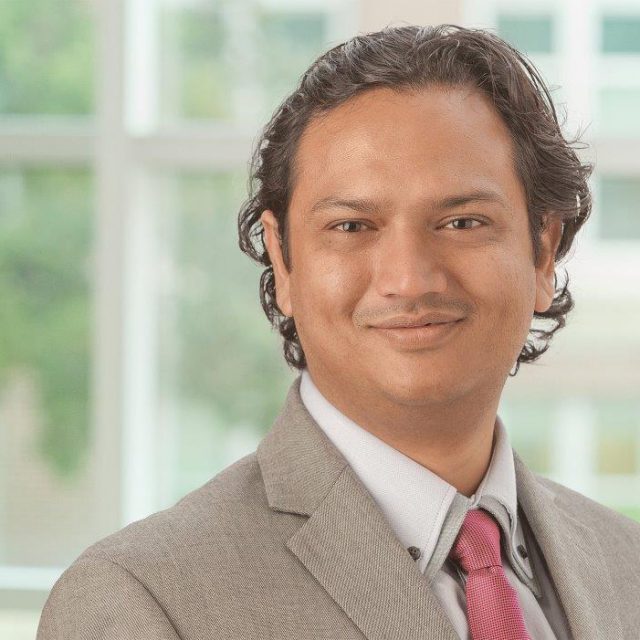
Teaching methods and principles
“If you do not change directions, you may end up where you are heading”. _Lao Tzu

Teachers need real feedback.
Most teachers love to teach but how do we tell them
- where are they doing a good job
- where they can improve.
- when the learning has occurred.
74% faculty are not comfortable in using
technology at campus. This number has not
changed in last 15 years.

If we teach today’s students as if we taught
yesterday’s, we rob them of tomorrow –
John Dewey (Philosopher, Educator)
Learning is a process of performing changing sequential generalizations by taking prior
experiences into account for future analysis and adapting from results.
“Just as reasoning by analogy is a matter of using knowledge from a one domain as a novel
context with which to generalize about another. Sometimes you have to go pretty far of a field
for guidance when confronting fresh challenges but if done judicially, the results can seem
very intelligent indeed.“
How do you know when the learning has occurred. You can a give them a series of replica
questions that you used in your own talk and test their memorization OR you can give them a
series of problems that are new for them that they have to solve using the knowledge and the
principles taught. In this way you are testing generalization and the better it is the more
confident you are that learning has occurred. Memorization is the mastering and storing of
different patterns for a future reconnection.
Learning Goal; students need to know the
specific learning goal (objective)
No one wants to be embarrassed. Ask open ended questions and get a discussion going.
Take back the blame (I am sorry it was not a fair question).
STEPS FOR IMPROVEMENT
Focus on Outcomes.
INTERACTIONS: Don’t make it one sided. Student to student and
Instructor to student.
REDESIGN. Don’t just bring what you already have. That is a good
place to start but It HAS to change for it to get better.
Keep it Simple. Try a little change first.
Allocate Sufficient Time. Everything that you want to do, needs time
to do it. So does teaching.
Collegial process: Ask your colleagues, some may have already done
it.
Student Expectations: Clearly state the role and rationale. Explain
responsibilities and consequences. Not everyone is used to being
responsible. You may need to guide them with Time management. Get
them used to ‘work’ at home.
HOW CAN I TEACH MORE EFFECTIVELY!
Learning is a PROCESS. Learning is not DONE to the students.
The Person who does the WORK does the learning.
The information is just the raw material for critical thinking. _Robin Wright.

Motivate the students with stories/activity
- Students need to know specific learning goal (objective). Show them the path of learning (how to organize).
- Build Rapport. Use videos/stories to build a rapport. By hitting three marks: See themselves as professional, Assess their own learning gaps, Pay attention to new knowledge
INNOVATION
Technology can never replace a great teacher, but modern teaching methods offer great
promise for transformation of medical learning and trainee wellbeing. Well-designed online
training modules, can reduce burden of “basic” teaching on faculty, allowing them to spend
more time working with residents. Providing self-paced and self-timed teaching to residents,
allows them more flexibility to manage clinical responsibilities and lower their stress levels.
And by using formative assessment strategies, we can illuminate their learning path.
What am I Doing WRONG?
• Too much content
• Not respond to body language (get up and stretch)
• Not taking feedback
• Too fast pace
• Not winning their praise
• Not testing them
• Not personable (not connecting with them)
• Not enough involvement (activity/task)
• Too fixed on my own planned lecture (not following the flow or taking direction from the
audience – PowerPoint slavery.
WHAT MATTERS!!!

Supervised learning: The idea of supervised learning is to teach
using labeled data. Student learns from data, the patterns that
correspond to the desired output. In the diabetes case, we build a
predictive model by providing the student with a dataset of people
who have diabetes and those who do not. After learning, the student is
provided with out-of-sample examples to evaluate how well it has
learned.
Unsupervised learning: In the case of unsupervised learning, there is
no such guidance with labeled examples, rather the student attempts to
determine the unknown structure of the data by grouping similar
samples of a particular feature.
Reinforcement learning: The concept of reward and penalty is
central to reinforcement learning. Here the learner interacts with a
non-stationary environment, in other words, the student interacts with
an environment that is changing. The student is rewarded when the
response from the environment is favorable and penalized when the
response is unfavorable. The value function of the learning task
determines the decision on what makes an action favorable or
unfavorable. In simpler terms, the goal of the learning problem
defines what constitutes the desired action.
CHECKLIST for FLIP Learning
Flexible Environment
- I establish spaces and time frames that permit students to interact and reflect on their learning as needed.
- I continually observe and monitor students to make adjustments as appropriate.
- I provide students with different ways to learn content and demonstrate mastery.
Learning Culture
- I give students opportunities to engage in meaningful activities without the teacher being central.
- I scaffold these activities by building content and provide them self paced learning.
Intentional Content
- I prioritize concepts and principles over memorizing facts and patterns.
- I create and/or curate relevant content (articles, videos) for my students to read on their own time.
- I differentiate to make content accessible and relevant to all students, making it valuable experience.
Professional Educator
- I interact with my student regularly to assess their grasp of content and interest.
- I conduct formative assessments through tasks and activities (concept map, memory matrix, write question).
- I collaborate and reflect with other educators and take responsibility for transforming my practice.




